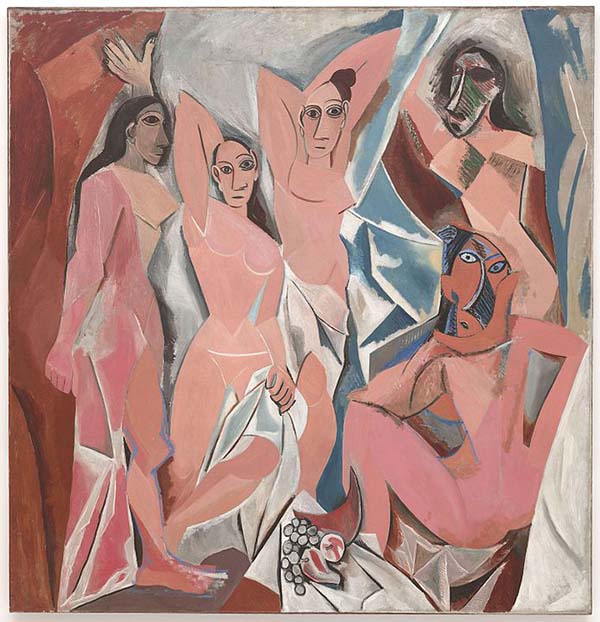About Cubism
Cubism was an art movement from the beginning of the 20th century that was highly influential for breaking away from the tradition of European paintings which created an illusion of three dimensions. Instead, cubist painters depicted multiple perspectives of their subjects simultaneously, breaking up three dimensions into two. Pablo Picasso and Georges Braque are recognized as the founders of Cubism. Cubism is divided into two periods: analytic cubism (1908-1912) which used muted tones and numerous fragmented shapes, and synthetic or crystal cubism (1912 onward) which used simpler compositions, bright colors, and introduced collage. Cubism opened the door for completely abstract art, and other avant-garde movements of the 20th century.
Pablo Picasso
Pablo Picasso is one of the founders of Cubism and one of the most famous artists in history. He was born in Spain in 1881, and died in 1973 in France. Picasso's father was a painter, and supported his son when he showed an early interest in art. Picasso moved to Paris in 1901, and would spend much of his life in France. In his Blue Period, Picasso experienced poverty as a struggling artist which was reflected in his dark paintings, while his Rose Period was a time of success with more optimistic paintings. In 1907, Picasso created "Les demoiselles d'Avignon", a painting influenced by Cezanne and African art, which shocked the art world with its abstract simplicity. He built on this period of African influence to create Cubism with Georges Braque in 1909. The two artists worked so closely that their work from the early Cubist period is practically indistinguishable. By 1919, Picasso began to paint more realistically again when he adopted a neoclassical style, and he would work in a variety of styles for the rest of his life as a renowned and successful artist.
,_oil_on_canvas,_81.3_x_61_cm,_Smart_Museum_of_Art.jpg)
,_oil_on_canvas,_71.1_x_55.9_cm,_Tate_Modern,_London.jpg)

